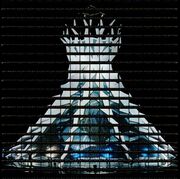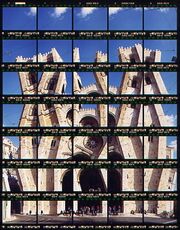Thomas Kellner at focus Galerie: seeing and photographing as a process
Thomas Kellner,
born1966 is one of the photographic artists with an international reputation and a unique visual language. 2009 he received therefor the art prize of the city of Düren, which was honored with an exhibition at the Glass Museum Linnich. At the same time his newest book "FarbWelt 135-36" appeared.
In the 90s, still in the final stage of his studies, Thomas Kellner began extensive experiments in photography. Then, between 1993-1997, after his first solo exhibition at the Kunstverein Eschweiler, he developed his actual visual language. The diversity of the early artistic experiments, is an expression of the interplay between camera design and stage direction of the author. In the resulting image is reflected precisely this process again, which has many similarities to the vision process.
Kellner works in cycles, sometimes with nature, then humans, or portrait and then back on architecture. He experimented with different visual language, until he finally finds his unique, multi-perspective and deconstructive imagery, which we know from the large-format contact sheets of the monuments.
Thomas Kellner's thinking always revolves around the question of the vision and the photographic image. The preoccupation with the history of art drives him ever again to pose questions to the image. Art-historical evidence from various periods and individual artists offering him rise to his own struggles. His route took him from the frame (diario veneziano) to the tableau (Panzerbarracken; La Nature Provencale) or Panorama (scene nude drawing) from or to a combination of both (Sixtoramen). In 1997 he decides to leave the path of the camera Obsura and to pursue the knowledge gained with conventional camera technology. The composite image on a negative as in the 11-hole work, or in a combination of several shots (La Nature Provencale), led him to the contact sheet of the roll film and 35mm film. From an initial draft of the Eiffel Tower as a tribute to Robert Delaunay and Cubism in Paris, and Berlin's Potsdamer Platz in Berlin, starting waiter turning to architecture and to more complex compositions with the material of 35mm film.
In focus gallery shows some of his most important projects on the way to his now distinctive images, ranging from the early editions of the multi-pinhole cameras, which Venedigprojekt or nature tableaus of Provence to the first contact sheet architectures from Paris, London, Lisbon and Berlin, the 2006 incurred Hearst portfolio, the 2008 incurred Palace Hotel, Brasilia and the Zollverein mine in the year 2009.
Opening times:
Stefanie Scheit-Koppitz, MA will speak at the opening about Thomas work on Saturday, May 29 at 19.00
Opening hours
1st June to 26th June 2010 Tuesday to Saturday from 16 until 20
27 June to 18 July by appointment.















